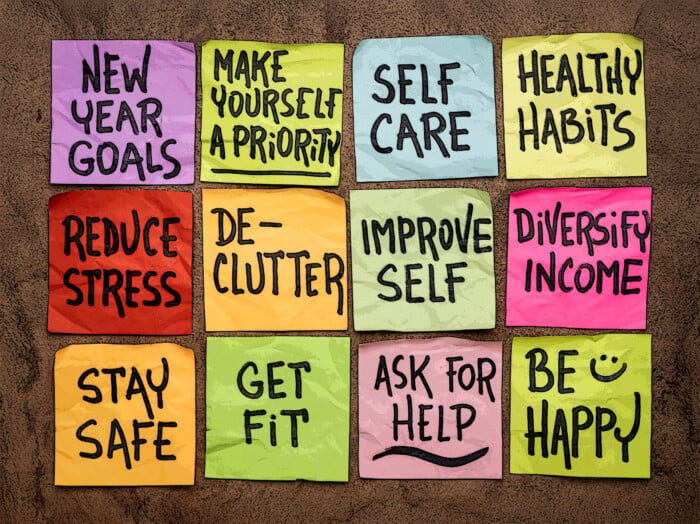Hiking Lessons from the White Mountains
Dr. Doug Dreffer, a family practice physician with DMC Primary Care in Concord, understands what facing an emergency in the White Mountains feels like. The avid hiker has reached the peaks of each of the state’s 48 4,000 footers in the White Mountains and considers himself to be fit — and well aware of the dangers unprepared hikers face at high altitudes. But weather and terrain can pose unexpected challenges, even for the most experienced hiker.
“I got trapped in the White Mountains this past summer on the Presidential Traverse, and I almost ran out of daylight and water at the same time,” he says. “I was hot and sweaty, and I was luckily on the trail to the AMC huts and got water there.”
He explains that he had poorly assessed the weather, never expecting the September day to reach 80 degrees. He says he only took enough water for an average New Hampshire fall day, not a hot one.
Years ago, Dreffer experienced a more serious emergency hiking Mount Isolation. He ruptured a disc in his back while crossing a stream. He was able to power through and finish his hike, but some hikers aren’t so lucky.
In 2023, the New Hampshire Fish and Game Department responded to 183 search-and-rescue missions, not unusual for the department. It received another 132 calls for help that didn’t require a rescue response. Two-thirds of these missions, or 121 rescues, were related to hiking.
“You always need to be prepared,” Dreffer says. “You could twist your ankle and be up there for several hours, and you need to think of all the things you might need to be safe — sunscreen, adequate water, and other things that protect you from the wind and other elements.”
Before You Head Out
Your age shouldn’t keep you from engaging in outdoor activities, nor should asthma, allergies or old injuries. It’s all about knowing your limits and having an action plan. For example, it’s not wise to hike on high- pollen days if you’re allergic to pollen, which triggers your asthma. On other days, you can take your inhaler and have an asthma action plan. You should also bring an EpiPen and any allergy medications you might need.
For patients with diabetes, Dreffer urges caution if patients typically experience low blood sugar with extensive exercise.
“If your diabetes is not well controlled, and your blood sugar is high, your fluid intake needs to be higher,” he says.
If you have underlying orthopedic or muscular problems, it’s critical to understand your limits and resist tackling an activity that is beyond your capacity. As we age, we also need to be aware of how our bodies respond to obstacles we might encounter in the outdoors.
“Older adults recovering from injury have an increased risk of falls. Their proprioception, or how they perceive their body in space, can also be altered by arthritis or neuropathy,” Dreffer says. “They shouldn’t be trying a new activity like rock climbing or ice climbing, and should stay in their comfort zone initially until they are fully recovered and have built up the stamina to take on harder and higher hikes.”
Always Be Prepared
Dreffer reminds his patients to be physically prepared and well equipped before they tackle challenging hikes or engage in other strenuous spring outdoor exercise. Walking on an incline on the treadmill is a lot different than hitting the open trail, he says.
Drink Up
Running out of water — or drinking unsafe water — can quickly turn a fun outing into a call for help. If you’re no longer producing urine and feel your energy waning, it’s time to drink up.
“The rule of thumb is that you should drink a liter of water every two hours,” Dreffer says. “That goes up if it’s hotter, humid or you’re hiking in higher elevations. That comes out to drinking about two cups of water every hour, but most people don’t do
a good job with that.”
Dreffer recommends bringing several water bottles. You can also wear a pack on your back that carries up to 3 liters of water and take sips along your hike.
“You shouldn’t rely on the water sources you come across,” he says.
Protect Your Skin
While most people understand that sunscreen plays a key role in keeping exposed skin from burning, it offers limited protection. It can wash off if you get sweaty, and it’s easy to forget to reapply it if you’re in the middle of a long bike ride, run or hike. Because of this, Dreffer suggests covering up as much as possible.
“Exposed skin is more susceptible to sun and insects,” he says. “It’s smarter to wear long sleeves, long pants and wide-brimmed hats. It’s more effective topical-blocker.”
Stay Fueled
You may not feel hungry, but your body needs calories to keep going. Your caloric output depends on several factors, Dreffer says. If you’re hiking a very long trail with elevation gains in the winter, you’ll be burning a lot more calories. You’ll need fewer calories if you’re taking a leisurely walk on a flat surface.
“It’s like feeding a furnace,” he says. “You should try to eat something every 30 to 45 minutes,” he says. “When your blood sugar is low, you respond with an adrenaline rush. You might feel sweaty or nauseous — the same response signals dehydration.”
Small, packable, calorie-dense snacks such as trail mix — which includes nuts for protein, raisins and M&Ms for carbohydrates and energy — work well. Beef jerky and dried fruit are also good options. Runners often prefer sports gels, gummies or goo.
Tips For Getting Trail-Ready
Whether the trail you seek to conquer originates in the White Mountains or your neighborhood, Dr. Alexia Strzalka, a family medicine doctor with DMC Primary Care in Bedford, says there are things you can do to prepare your body for outdoor activities.
Strzalka, who regularly hikes with her two children, ages 6 and 10, encourages people with pre-existing health conditions to talk to their providers to see if they need to adapt their exercise of choice.
“For somebody who has been totally sedentary, I’d first recommend doing low- intensity activities like walking, Pilates, swimming or dancing, and gradually increasing activity,” she says. “If you’re not totally sedentary, say you’ve been walking on a treadmill, gauge where you’re starting from. You can increase frequency, duration, intensity and tempo.”
While most people are focused on getting right to their activity, it’s important to stay strong and flexible to prevent injury. That includes taking part in dynamic stretching and active movements like lunges, squats, leg swings, arm circles and pushups before you begin moving to replicate the activity you plan on doing, Strzalka says.
“You also want to start with some light cardio to slowly elevate your heart rate,” she says. “This could include jumping jacks, a light jog or walking.”
Your cooldown is just as important, and most people skip it, Strzalka says.
It is important to stretch out your hamstrings, quads and calves after you’re finished exercising. Depending on the intensity of your exercise, you should also slowly decrease your heart rate.
“After we’ve done a hiking trip, we’re anxious to get back to the car, but we really need to spend an extra couple of minutes cooling down,” she says.
Let People Know Your Whereabouts
If friends and family aren’t sure exactly where you’re running, biking or hiking, you’ll have a tougher time getting help if you encounter a problem, Strzalka says. In addition to carrying your cellphone, hiking or biking with a buddy or investing in a GPS-tracking device is probably wise and worth the investment.
If you plan on hiking this spring, Dreffer recommends purchasing a Hike Safe Card. According to New Hampshire Fish and Game, Hike Safe Cards cost $25 per person or $35 per family. The card is valuable for anyone hiking, paddling, cross-country skiing or engaging in other outdoor recreation.
“People who obtain the cards are not liable to repay rescue costs if they need to be rescued,” according to Fish and Game. “An individual may still be liable for response expenses if the actions that created the need for the emergency response meet criteria set forth by legislation.”














